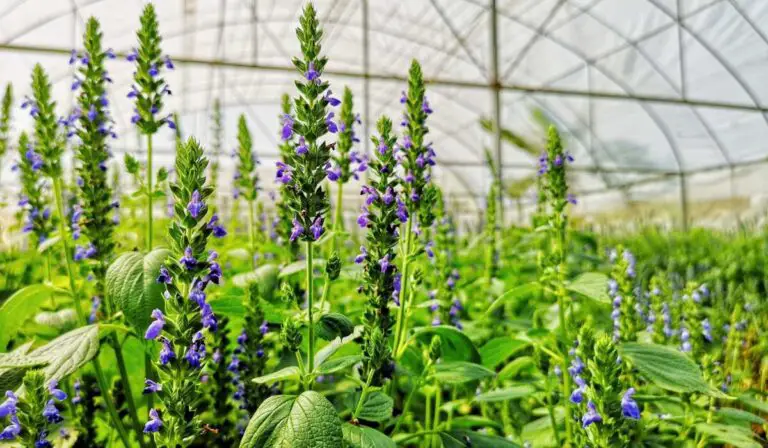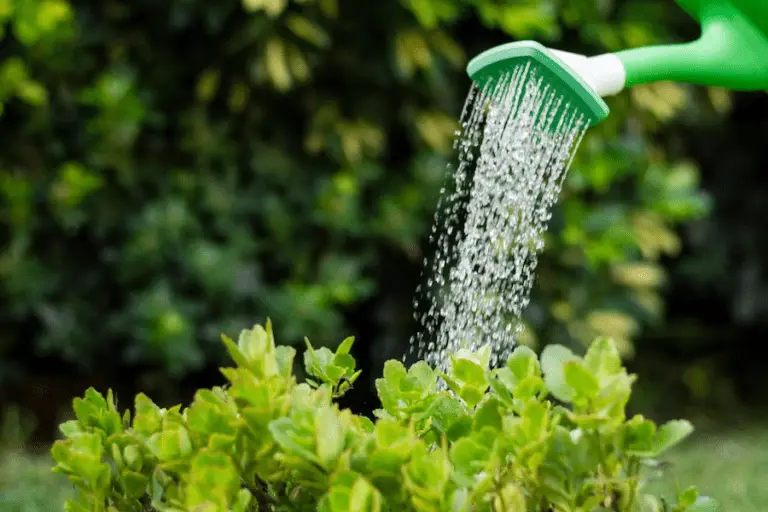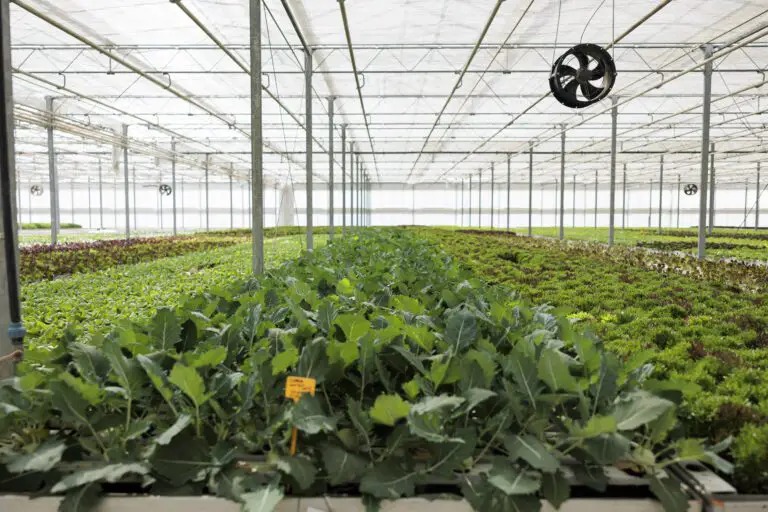4 Ways to Grow Vertical Gardens in Small Spaces: ultimate Reference
Table of Contents
How to Choose the Right Plants for Vertical Gardens in Small Spaces
When choosing plants for vertical gardens in small spaces, it is essential to consider the unique growing conditions of vertical arrangements. Opt for plants that are well-suited for vertical growth, such as trailing or climbing varieties that can thrive in a confined space. Select plants with compact root systems that can adapt to the limited soil volume typically found in vertical planters. Additionally, choose plants that require similar levels of sunlight, water, and nutrients to ensure harmonious growth in your vertical garden.
Consider incorporating a variety of plants with different textures, colors, and growth habits to create visual interest and maximize the aesthetic appeal of your vertical garden. Mix foliage plants with flowering varieties to add vibrancy and diversity to the overall composition. Pay attention to the mature size of each plant and ensure they have enough space to grow and spread vertically without overcrowding or overshadowing one another. By selecting a thoughtful combination of plants that complement each other, you can create a stunning vertical garden that thrives in even the smallest of spaces.

Selecting the Ideal Location for Your Vertical Garden
When selecting the ideal location for your vertical garden, it is essential to consider the amount of sunlight that the area receives. Most plants require at least 6 hours of sunlight daily to thrive, so choosing a spot with ample sunlight is crucial for the success of your vertical garden. South-facing walls or areas with unobstructed exposure to sunlight are generally ideal for maximizing plant growth and productivity.
In addition to sunlight, it is important to assess the accessibility of the chosen location. Make sure that the area is easily reachable for regular maintenance tasks such as watering, pruning, and harvesting. Accessibility also includes considering factors like proximity to water sources and the ease of monitoring plant health. By taking these factors into account, you can ensure that your vertical garden is positioned in an optimal location for the plants to flourish.
Maximizing Sunlight for Optimal Growth in Vertical Gardens
When it comes to maximizing sunlight for optimal growth in vertical gardens, selecting the right location is key. Choose a spot that receives at least 6-8 hours of direct sunlight per day for sun-loving plants like tomatoes, peppers, and herbs. South-facing walls or balconies are often the best options for ensuring ample sunlight exposure throughout the day. Additionally, consider reflective surfaces nearby that can bounce sunlight back onto your vertical garden for increased light intensity.
Incorporating light-reflecting materials into your vertical garden design can help enhance sunlight exposure for your plants. White or light-colored walls, mirrors, or even metallic accents can help redirect and amplify sunlight onto your vertical garden. Using trellises or hanging baskets strategically can also create shade patterns that optimize sunlight distribution to different sections of your vertical garden. With thoughtful planning and creativity, you can make the most of available sunlight to ensure your vertical garden thrives and flourishes.
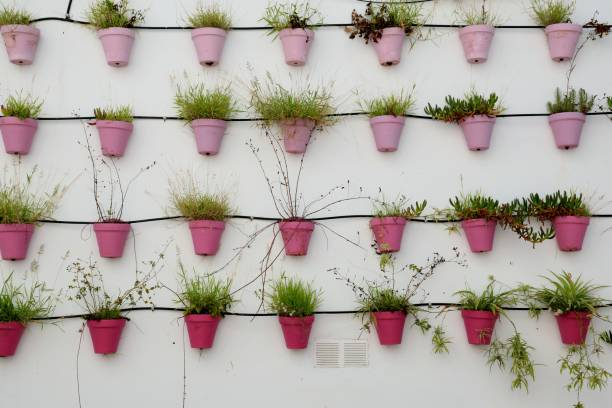
Utilizing Vertical Planters for Small Space Gardening
Utilizing vertical planters is an excellent solution for small space gardening, allowing you to maximize your planting area without taking up precious floor space. Vertical planters come in a variety of designs and materials, offering flexibility in creating a bespoke garden that suits your aesthetic preferences and plant requirements. By utilizing vertical planters, you can grow a wide range of plants, from herbs and vegetables to ornamental flowers, creating a lush green oasis even in the smallest of spaces.
Vertical planters are not only space-saving but also offer practical benefits such as easier maintenance, efficient water usage, and better air circulation for your plants. These planters can be strategically positioned to optimize sunlight exposure and airflow, promoting healthier plant growth and higher yields. Whether you are a beginner or seasoned gardener, incorporating vertical planters in your small space gardening endeavors can elevate your garden design and productivity, bringing joy and beauty to your outdoor or indoor living spaces.
Incorporating Hanging Baskets into Your Vertical Garden Design
When incorporating hanging baskets into your vertical garden design, consider the type of plants you want to showcase and how they will complement each other in terms of sunlight and watering needs. Hanging baskets add dimension and variety to your vertical garden, creating a visually appealing and dynamic display. Ensure that the baskets are securely attached to your vertical structure to prevent any accidents or damage.
Choose trailing plants like ivy, petunias, or fuchsia for hanging baskets as they gracefully spill over the edges, adding a cascading effect to your vertical garden. Mix in some colorful annual flowers or herbs for a pop of color and fragrance. Remember to water the hanging baskets regularly, as they may dry out faster than plants in traditional planters due to their exposed position. By strategically placing hanging baskets within your vertical garden, you can maximize space while creating a lush and vibrant oasis in even the smallest of areas.
Creating a DIY Trellis System for Vertical Gardening
When it comes to vertical gardening, creating a DIY trellis system is a practical and efficient way to maximize space and promote healthy plant growth. A trellis provides structural support for climbing plants, allowing them to grow vertically and flourish in smaller spaces. By building your trellis, you can customize it to suit your specific plant needs and aesthetic preferences, all while adding a charming and functional element to your garden design.
One key consideration when designing a DIY trellis system is the material selection. Opt for durable materials such as wood, metal, or PVC pipes that can withstand outdoor conditions and provide sturdy support for your plants. The design of the trellis should also take into account the weight of the plants and their growth patterns to ensure proper stability and longevity. Additionally, spacing between the trellis slats or wires should allow for sufficient airflow and light penetration to promote healthy growth and prevent issues such as mold or pest infestations.

Implementing a Watering Schedule for Vertical Gardens in Small Spaces
To ensure the health and vitality of your vertical garden in small spaces, implementing a consistent watering schedule is paramount. Vertical gardens have unique watering requirements due to their design, which can impact moisture retention and distribution. It is essential to monitor the moisture levels of your vertical garden regularly to prevent over or under-watering, both of which can have detrimental effects on plant growth and overall plant health. A well-thought-out watering schedule will not only promote optimal growth but also contribute to the sustainability and longevity of your vertical garden.
When establishing a watering schedule for your vertical garden, factors such as the plant species, container material, climate conditions, and seasonal variations should all be taken into account. Different plants have varying water needs, with some requiring more frequent watering than others. Additionally, the type of container used in your vertical garden can influence water retention and drainage, affecting the frequency and amount of water necessary. By tailoring your watering schedule to suit the specific requirements of your vertical garden setup, you can create an environment that fosters healthy growth and thriving plant life.
Choosing the Best Soil for Vertical Garden Planters
When it comes to vertical gardening, choosing the right soil for your planters is crucial for the success of your plants. The type of soil you use will directly impact the growth and health of your vertical garden. Opt for a lightweight, well-draining mixture that provides good aeration for the roots to thrive. A combination of peat moss, perlite, and vermiculite can create a balanced soil structure that retains moisture without becoming waterlogged, ideal for vertical planters where water drainage may be limited.
Moreover, consider adding organic matter such as compost to enrich the soil with essential nutrients for plant growth. Organic materials not only enhance soil fertility but also promote beneficial microbial activity that aids in nutrient uptake by the plants. By selecting a quality soil mix tailored to the needs of your vertical garden plants, you can create a thriving environment that supports healthy growth and abundant harvests.

Utilizing Hydroponic Systems for Vertical Gardening in Small Spaces
Hydroponic systems offer an innovative solution for vertical gardening in small spaces, allowing for efficient plant growth without the need for traditional soil-based methods. By utilizing nutrient-rich water solutions, plants can thrive in a controlled environment, making it an ideal choice for urban gardeners and indoor plant enthusiasts. With the proper setup and maintenance, hydroponic systems can produce higher yields and faster growth rates compared to conventional gardening methods.
One of the key advantages of hydroponic systems for vertical gardening is the ability to conserve water. By circulating nutrient solutions directly to the plant roots, this method eliminates water wastage often associated with traditional soil-based gardening. Additionally, the controlled environment of hydroponic systems reduces the risk of soil-borne diseases and pests, leading to healthier plants and more consistent crop yields. Whether you are a seasoned gardener looking to try a new approach or a beginner seeking an efficient way to grow plants in limited space, exploring hydroponic systems for vertical gardening can offer a rewarding and sustainable solution.
Maintaining Proper Air Circulation in Vertical Gardens
For optimal growth and health of plants in vertical gardens, proper air circulation is essential. Stagnant air can lead to the buildup of moisture and increase the risk of fungal diseases. To maintain proper air circulation in vertical gardens, strategically place your plants to allow for adequate airflow. Avoid overcrowding plants, as this can restrict air movement and create pockets of stagnant air. Additionally, consider incorporating a small fan to gently circulate air within the vertical garden, promoting better ventilation and reducing the risk of plant diseases.
Another effective way to ensure proper air circulation in vertical gardens is to regularly inspect and clean the plant foliage. Dust and debris can accumulate on leaves, inhibiting the exchange of gases essential for plant growth. By gently wiping down the leaves with a damp cloth or spraying them with a gentle stream of water, you can help improve air circulation and optimize the overall health of your vertical garden plants. Remember that good air circulation not only benefits the plants themselves but also creates a more pleasant environment for you to enjoy your vertical garden.
Pruning and Trimming Techniques for Vertical Garden Plants
Pruning and trimming are essential practices to ensure the health and productivity of plants in vertical gardens. Regular pruning helps maintain the desired shape of the plants, promotes air circulation, and prevents disease by minimizing overcrowding. When it comes to vertical garden plants, such as vines, climbers, and hanging baskets, pruning is crucial for managing growth and encouraging flowering or fruiting.
One key technique for vertical garden plants is to prune selectively, focusing on removing dead or diseased branches, as well as any crossing or overcrowded stems. By using clean, sharp tools and making precise cuts at the correct angle, gardeners can promote new growth and overall plant health. It’s also important to consider the specific needs of each plant species when deciding on the timing and extent of pruning, as some may benefit from a more aggressive approach while others require gentler care.
Sure, here’s a table outlining pruning and trimming techniques for vertical garden plants:
| Technique | Description |
|---|---|
| Deadheading | Remove spent flowers or faded blooms regularly to encourage continuous blooming and prevent the plant from diverting energy into seed production. |
| Pinching | Pinch off the tips of new growth or terminal buds to encourage lateral branching and a bushier growth habit. This technique is especially useful for promoting fuller growth in plants like herbs and annual flowers. |
| Thinning | Remove overcrowded or weak stems to improve air circulation and light penetration within the vertical garden. Thinning also reduces competition for nutrients and encourages stronger, healthier growth in remaining plants. |
| Heading Back | Cut back long or leggy stems to encourage branching and denser growth. Heading back is particularly beneficial for vining or trailing plants, helping them maintain a compact and tidy appearance within the vertical garden. |
| Rejuvenation Pruning | Periodically prune back older or woody growth to stimulate new growth and rejuvenate the plant. This technique can help revitalize overgrown or tired-looking plants, promoting vigorous growth and extending their lifespan. |
| Shape Pruning | Trim the plant into a desired shape or form to maintain aesthetics and prevent it from outgrowing its designated space within the vertical garden. Shape pruning is essential for maintaining a neat and well-defined appearance. |
| Dead Leaf Removal | Regularly remove dead, yellowing, or diseased leaves to improve the overall appearance of the vertical garden and prevent the spread of diseases or pests. Dead leaf removal also promotes airflow and reduces the risk of fungal issues. |
| Clean Pruning Tools | Use sharp and clean pruning tools to make precise cuts and minimize damage to the plant. Disinfect tools between each use, especially when working with multiple plants, to prevent the spread of diseases and pathogens. |
| Monitor Plant Health | Regularly monitor the health and growth of plants in the vertical garden. Look for signs of stress, disease, or pest infestation, and address issues promptly through appropriate pruning or trimming techniques. |
| Consider Plant Requirements | Tailor pruning and trimming practices to meet the specific needs of each plant species in the vertical garden. Research the ideal pruning timing and techniques for different plants to ensure optimal growth and performance. |
Implementing these pruning and trimming techniques will help maintain the health, appearance, and productivity of plants in your vertical garden, ensuring a lush and thriving green space.
Preventing Pests and Diseases in Vertical Gardens
Pests and diseases can pose a threat to the health and vitality of your vertical garden plants. To prevent these issues, it is crucial to implement proactive measures that can help safeguard your green oasis. One effective method is to regularly inspect your plants for any signs of infestation or disease. By catching any problems early on, you can take swift action to mitigate the damage and protect the rest of your garden.
In addition to preventative monitoring, practicing good hygiene in your vertical garden can also help prevent pests and diseases from taking hold. This includes regularly cleaning your planters, tools, and surrounding areas to reduce the risk of contamination. By maintaining a clean and well-organized garden space, you can create an inhospitable environment for pests and diseases, ultimately promoting the health and longevity of your vertical garden plants.
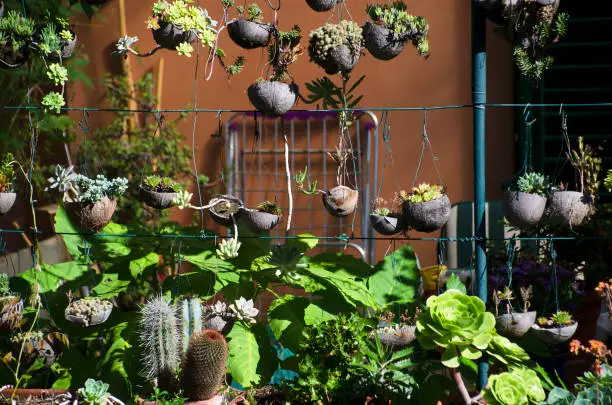
Harvesting and Enjoying the Fruits of Your Vertical Garden
When it comes to harvesting the fruits of your vertical garden, there’s a sense of accomplishment and satisfaction that comes with seeing your hard work pay off. As you pick fresh produce from your plants, whether it’s ripe tomatoes, crisp lettuce, or vibrant peppers, you’re not only enjoying the literal fruits of your labor but also reaping the nutritional benefits of homegrown, organic produce.
One of the joys of vertical gardening is the convenience of having your fresh fruits and vegetables within arm’s reach. Imagine stepping outside or into your indoor garden space, plucking a juicy strawberry or a fragrant herb, and incorporating it into your meals right away. The immediacy of harvesting from your vertical garden adds flavor, freshness, and a connection to nature that enhances your overall gardening experience.

Repurposing Household Items for Vertical Garden Projects
Repurposing household items for vertical garden projects can be a creative and sustainable way to breathe new life into everyday objects while adding greenery to your living spaces. Items such as old wooden crates, tin cans, wine bottles, and shoe organizers can be transformed into unique planters for herbs, succulents, flowers, and even small vegetables. By upcycling these materials, you not only reduce waste but also bring a touch of eco-friendliness to your gardening endeavors.
When repurposing household items for vertical gardens, consider factors such as drainage, material durability, and aesthetic appeal. Ensure that the items chosen are suitable for holding soil and water without deteriorating quickly. Additionally, think about the color, texture, and size of the containers to complement the overall design of your vertical garden. With a little imagination and innovation, turning household items into planters can elevate the look of your space while promoting sustainability in your gardening practices.
Incorporating Vertical Gardens into Indoor Spaces
When incorporating vertical gardens into indoor spaces, it is essential to consider the available light conditions. Selecting plants that thrive in low-light environments, such as pothos, spider plants, or peace lilies, can ensure the success of your indoor vertical garden. Additionally, utilizing grow lights or placing your vertical garden near a window that receives ample sunlight can help boost the growth and overall health of your plant selection.
Another crucial aspect to keep in mind when integrating vertical gardens indoors is the maintenance of proper air circulation. Stagnant air can lead to issues like mold, mildew, and pest infestations. To promote air flow, consider placing a small fan near your indoor vertical garden or opening windows periodically to allow fresh air to circulate. This simple step can significantly contribute to the overall well-being of your indoor plants and create a healthier indoor environment.
Seeking Inspiration and Ideas for Vertical Garden Designs
When it comes to seeking inspiration and ideas for vertical garden designs, the possibilities are truly endless. From vibrant hanging baskets to intricate DIY trellis systems, there are numerous creative ways to incorporate vertical gardening into your space. Whether you’re looking to maximize sunlight with strategically placed planters or explore the world of hydroponic systems for vertical gardening, the key is to find inspiration that resonates with your personal style and gardening goals.
One great way to gather inspiration for your vertical garden designs is by exploring online resources and social media platforms dedicated to gardening enthusiasts. Websites like Pinterest and Instagram are treasure troves of innovative vertical garden ideas, showcasing a wide range of styles, techniques, and plant combinations. Additionally, visiting botanical gardens, attending gardening workshops, and connecting with fellow gardeners can provide valuable insights and spark your creativity when it comes to designing your own vertical garden oasis.
Can I use succulents in a vertical garden design?
Yes, succulents are a great choice for vertical gardens as they are low maintenance and can thrive in small spaces.
How can I incorporate a water feature into my vertical garden?
You can include a small water fountain or a wall-mounted water feature in your vertical garden design to add a calming element to your space.
Is it possible to grow vegetables in a vertical garden?
Yes, you can grow a variety of vegetables in vertical gardens, such as tomatoes, peppers, and herbs, as long as they receive enough sunlight and water.
Can I hang my vertical garden indoors?
Yes, you can hang your vertical garden indoors as long as you choose plants that can thrive in indoor environments and provide them with adequate light and water.
How can I create a vertical garden on a budget?
You can repurpose household items, such as old pallets or shoe organizers, to create a budget-friendly vertical garden. Additionally, you can propagate plants from cuttings to save money on buying new plants.

Beck Wakeford is a dedicated writer at SouthElMonteHydroponics, with a fervent enthusiasm for agriculture and technological innovation. Armed with a degree in Agricultural Engineering from a leading university, Beck specializes in hydroponic systems design, automation, and optimization. Their passion for merging traditional farming with cutting-edge technology drives them to explore novel solutions for sustainable food production. Beck’s expertise and keen interest in the intersection of engineering and agriculture make them a valuable asset in the quest for efficient and eco-friendly farming practices. Through their writing, Beck aims to inspire others to embrace the potential of hydroponics in shaping a more sustainable future.

